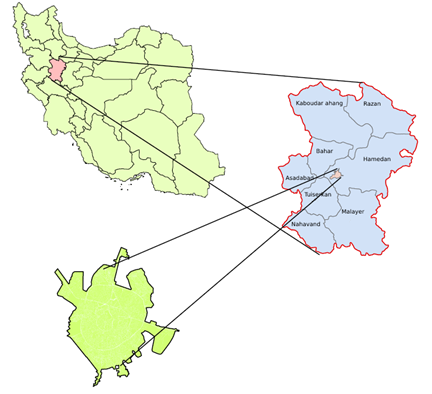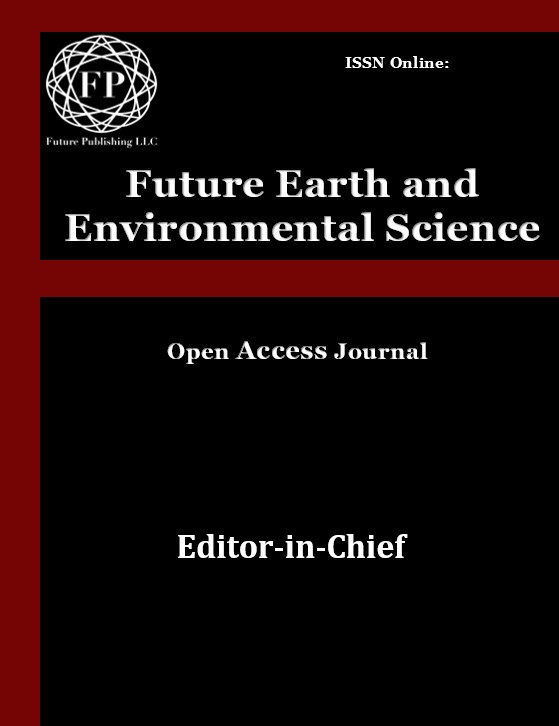Enhancing flood resilience: a comprehensive assessment of vulnerable centers through AHP-TOPSIS integration
Keywords:
Risk assessment, Flood zoning, AHP-TOPSIS Integration, Climate change, Urban planningAbstract
This paper addresses the examination of urban resilience to mitigate the life and financial impacts of natural disasters. One of the fundamental principles of urban resilience is the enhancement of infrastructure resilience during natural disasters and incidents. In this regard, a crucial step is improving the resilience of key urban centers. This research employs a combined method of the analytic Hierarchy Process (AHP) and TOPSIS to measure the resilience of flood-vulnerable buildings. Using a descriptive-analytical approach, the paper initially gathers the required data and information, identifies the influential criteria and sub-criteria for ranking the resilience of buildings against floods, calculates the final weights for each of the vulnerable city's key centers, and ranks the options using the TOPSIS method. The ranking results for the vulnerable centers in Hamedan city against floods indicate that, in order, the Industrial University with a weight of 1.000, Payam Noor University with 0.520, Amir Hotel with 0.297, Architecture and Art University with 0.273, and the Blood Transfusion Center with 0.153 are the key vulnerable buildings. The Blood Transfusion Center exhibits the lowest level of resilience, while the Industrial University shows the highest level of resilience. The method used in this research can be extended to all of the cities based on their unique decision-making criteria.
References
Whitmee, S., et al., Safeguarding human health in the Anthropocene epoch: report of The Rockefeller Foundation–Lancet Commission on planetary health. The lancet, 2015. 386(10007): p. 1973-2028.
Bankoff, G., Time is of the Essence: Disasters, Vulnerability and History1. International Journal of Mass Emergencies & Disasters, 2004. 22(3): p. 23-42.
Estelaji, F., A. Naseri, and R. Zahedi, Evaluation of the Performance of Vital Services in Urban Crisis Management. Advances in Environmental and Engineering Research, 2022. 3(4): p. 1-19.
Zahedi, R., et al., Potentiometry of wind, solar and geothermal energy resources and their future perspectives in Iran. Environment, Development and Sustainability, 2024: p. 1-27.
Estelaji, F., et al., Potential measurement and spatial priorities determination for gas station construction using WLC and GIS. Future Technology, 2023. 2(4): p. 24-32.
Javanroodi, K., et al., Designing climate resilient energy systems in complex urban areas considering urban morphology: A technical review. Advances in Applied Energy, 2023: p. 100155.
Zahedi, R., et al., Numerical analysis of water, energy, and environment nexus in the hybrid thermal and solar multigeneration power plants. Energy Science & Engineering, 2024.
Moraci, F., et al., Cities under pressure: Strategies and tools to face climate change and pandemic. Sustainability, 2020. 12(18): p. 7743.
Naseri, A., et al., Simulating the performance of HOV lanes for optimal urban traffic management. Transportation Research Interdisciplinary Perspectives, 2024. 23: p. 101010.
Rus, K., V. Kilar, and D. Koren, Resilience assessment of complex urban systems to natural disasters: A new literature review. International journal of disaster risk reduction, 2018. 31: p. 311-330.
Kelle, U., The development of categories: Different approaches in grounded theory. The Sage handbook of grounded theory, 2007: p. 191-213.
ASL, J.A., A. Zarrabi, and M. Taghvaei, An Analysis of Iranian Electronic Cities Case Study: Uremia City (Challenges and Opportunities). Editorial Team: p. 123.
Estelaji, F., A. Abasi Semnani, and E. Alipouri, Flooding of Lorestan region with stamp strategies led by crisis management. Journal of Range and Watershed Managment, 2021. 74(1): p. 1-11.
Estelaji, F., et al., Earthquake, flood and resilience management through spatial planning, decision and information system. Future Technology, 2024. 3(2): p. 11-21.
Saqlain, M., Sustainable hydrogen production: A decision-making approach using VIKOR and intuitionistic hypersoft sets. Journal of Intelligent Management Decision, 2023. 2(3): p. 130-138.
Bouchama, F. and M. Kamal, Enhancing Cyber Threat Detection through Machine Learning-Based Behavioral Modeling of Network Traffic Patterns. International Journal of Business Intelligence and Big Data Analytics, 2021. 4(9): p. 1-9.
Mahmoudi, N., et al., Environmental sustainability in hospitals: Dual analysis of electrical consumption and pollutant emissions. Cleaner Engineering and Technology, 2024: p. 100740.
Tayefeh, A., et al., Advanced bibliometric analysis on water, energy, food, and environmental nexus (WEFEN). Environmental Science and Pollution Research, 2023: p. 1-20.
Cimellaro, G.P., et al., PEOPLES: a framework for evaluating resilience. Journal of Structural Engineering, 2016. 142(10): p. 04016063.
Linkov, I. and B.D. Trump, The science and practice of resilience. 2019: Springer.
Shaghaghi, A., et al., Proposing a new optimized forecasting model for the failure rate of power distribution network thermal equipment for educational centers. Thermal Science and Engineering, 2023. 6(2): p. 2087.
Nowell, B., C.P. Bodkin, and D. Bayoumi, Redundancy as a strategy in disaster response systems: A pathway to resilience or a recipe for disaster? Journal of Contingencies and Crisis Management, 2017. 25(3): p. 123-135.
Zahedi, R., M.H. Ghodusinejad, and S. Gitifar, Threats Evaluation of Border Power Plants from the Perspective of Fuel Type and Providing Solutions to Deal with Them: A Case Study of Iran. Transactions of the Indian National Academy of Engineering, 2022: p. 1-13.
Kerntopf, M., Thou Ought to Deborder: The Normative Influence of Regional IGOs on Intra-Communal Bordering in the Baltic Sea Region and the South China Sea Region. 2023.
D'Agostino, D., et al., Assessment of passive and active buildings resilience to gas supply disruption in winter across European climates. Sustainable Cities and Society, 2023. 92: p. 104461.
Štilić, A. and A. Puška, Integrating Multi-Criteria Decision-Making Methods with Sustainable Engineering: A Comprehensive Review of Current Practices. Eng, 2023. 4(2): p. 1536-1549.
Fawzy, M.M., et al., Prioritization of Egyptian road maintenance using analytic hierarchy process. International Journal of Pavement Research and Technology, 2023: p. 1-14.
Abdollahi, S., et al., Spatial assessment of biodiversity and conservation priorities in Hamedan Province, Iran, using a landscape ecology approach. Journal of Environmental Studies and Sciences, 2024: p. 1-14.
Opper, M., O. Winther, and M.J. Jordan, Expectation consistent approximate inference. Journal of Machine Learning Research, 2005. 6(12).
Feldman, Y. and O. Lobel, The incentives matrix: The comparative effectiveness of rewards, liabilities, duties, and protections for reporting illegality. Tex. L. Rev., 2009. 88: p. 1151.
Peres-Neto, P.R., et al., Variation partitioning of species data matrices: estimation and comparison of fractions. Ecology, 2006. 87(10): p. 2614-2625.
Yin, X., D. Chen, and J. Ji, How does environmental regulation influence green technological innovation? Moderating effect of green finance. Journal of Environmental Management, 2023. 342: p. 118112.







